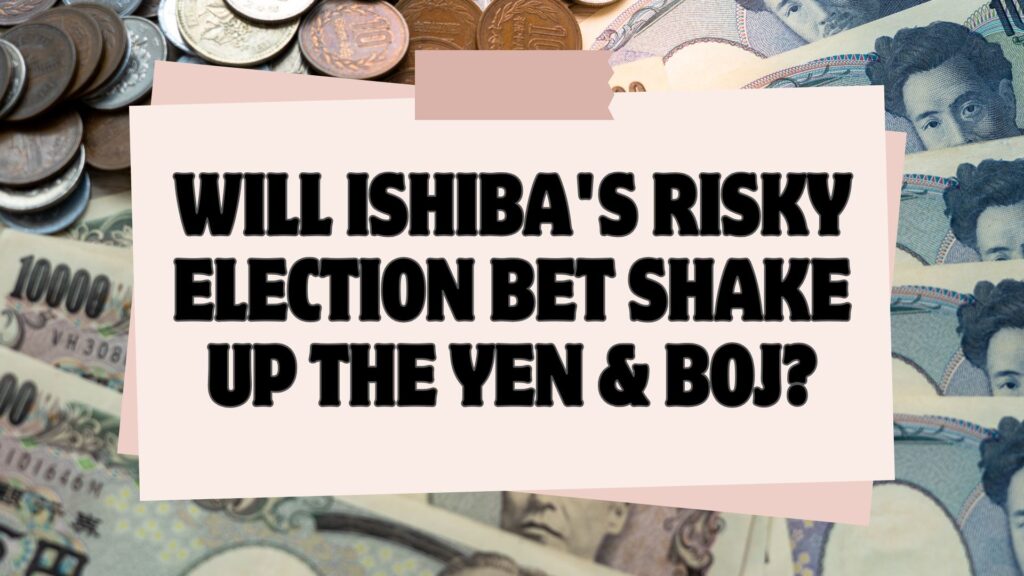
Ishiba’s Risky Election Bet May Boost BOJ, big swing expect in Yen
Japan’s Prime Minister Shigeru Ishiba faces a crucial test in the Oct. 27 snap election, where the Liberal Democratic Party (LDP) risks losing its outright majority. Despite this, the LDP is expected to remain in power, providing stability for the Bank of Japan (BOJ) to continue its monetary policy trajectory, including potential rate hikes. Ishiba called the early election to catch the opposition off guard, hoping to minimize losses, but it could weaken the LDP’s control.
The opposition, led by the Constitutional Democratic Party (CDP), is pushing for changes to the BOJ’s inflation target and the introduction of wage growth goals, threatening the central bank’s independence. The CDP’s proposal includes adjusting the inflation target from 2% to “above 0%” and setting wage growth targets in collaboration with the government.
This raises concerns for BOJ Governor Kazuo Ueda, who has been clear that inflation needs to hold above 2% to justify further rate hikes. Political uncertainty following the election could complicate Ueda’s policy plans, especially if the LDP’s majority is weakened.
The BOJ holds a key policy meeting on Oct. 31, just days after the election, where Governor Ueda will face important decisions on interest rates. The BOJ ended its negative interest rate policy in March and raised its short-term target to 0.25% in July.
While inflation has remained steady around 2%, Ueda is in no rush to raise rates again, preferring to assess global risks such as economic uncertainty and volatile markets. With both Japan’s election on Oct. 27 and the U.S. election approaching, the BOJ is expected to keep rates steady for now.
Looking ahead, the BOJ has meetings scheduled for December and January. While a poll shows most economists expect the next rate hike by March 2024, the BOJ aims to gradually raise rates to neutral levels, around 1%, by late 2025.
However, political uncertainties, including the outcome of the Oct. 27 election, could influence the central bank’s rate path if Ishiba’s government pushes back against further hikes.
Technical Outlook – U.S. Dollar / Japanese Yen

The USDJPY pair has been in a strong bullish trend since bottoming out at 139.57 on 16 September, gaining over 8% and reaching a recent high of 153.19, with the pair trading around 151.80 as of yesterday.
This upward momentum faces a key resistance at 153.62, which aligns with the 61.8% Fibonacci retracement level. A failure to break above this level could trigger a corrective move towards the 150.80–149.50 zone in the near future.
On the upside, a decisive break above 153.55 would open the door for further gains, with potential targets at 154.55 and the July high of 157.00. Traders should be cautious, as large swings in the Yen could introduce volatility not only in the currency markets but also in bullion and broader financial markets.
With the upcoming election in Japan and the Bank of Japan’s policy meeting, heightened volatility is expected. These events could play a pivotal role in determining the next significant move in the USDJPY pair.
Happy Trading!
Commodity Samachar Securities
We Decode the Language of the Markets
Also Read: Canada Retail sales, US Goods order in Focus today , COMMODITY SAMACHAR SECURITIES PVT. LTD.
Recommended Read: Trader’s Guide: Could You Profit from 2024’s Silver and Gold Price Fluctuations?
Want Help On Your Trades ?
Chat with RM